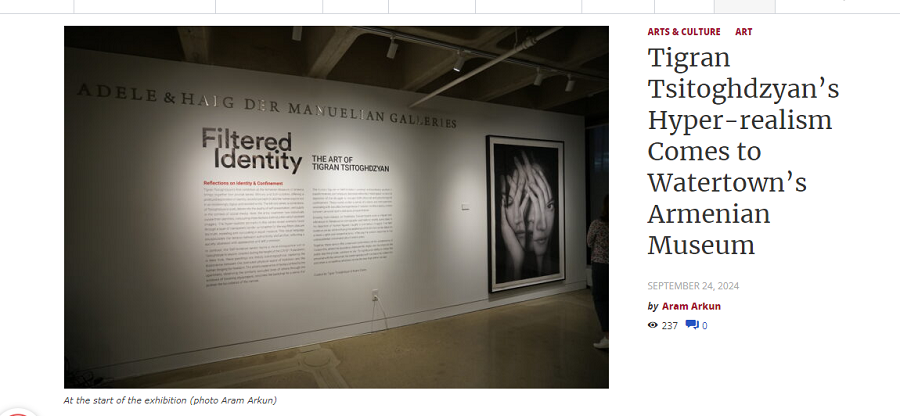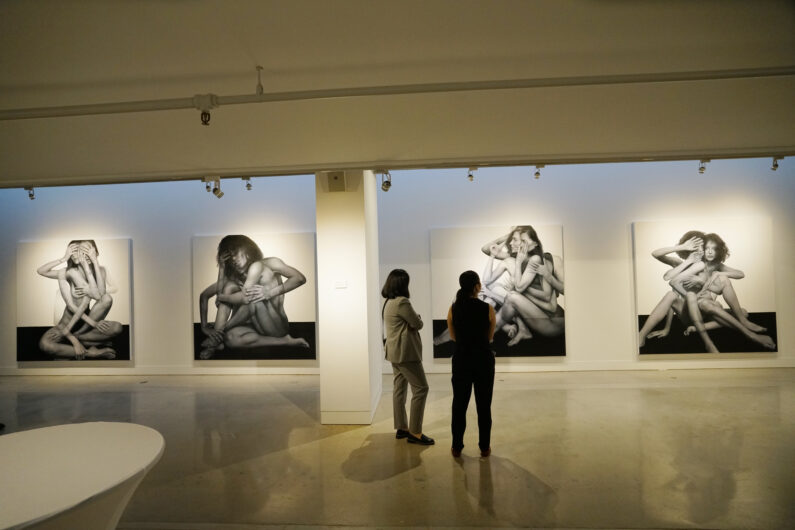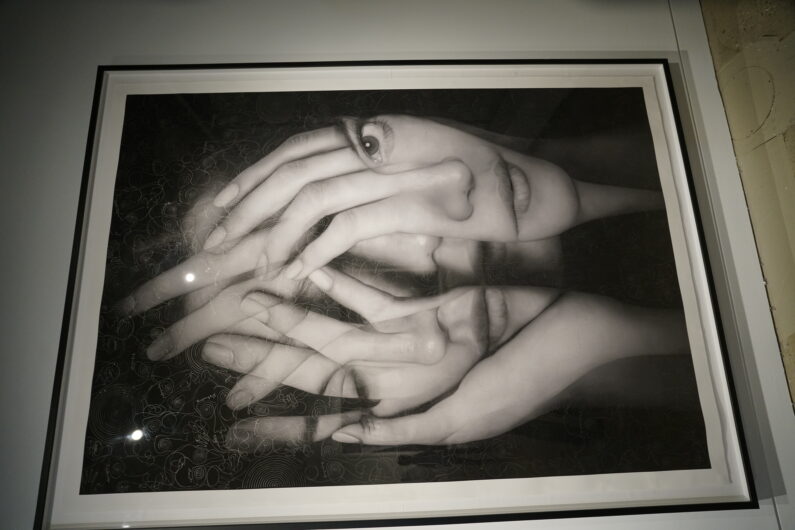by Aram Arkun
WATERTOWN — A crowd of Armenian and non-Armenian guests filled the third floor Armenian Museum of America galleries in Watertown to view the oversized artworks of Tigran Tsitoghdzyan during the September 19 opening night of his show “Filtered Identity: The Art of Tigran Tsitoghdzyan,” curated by artist and educator Ryann Casey.
Executive Director Jason Sohigian of the Armenian Museum provided a brief introduction to Tsitoghdzyan and his photograph-like hyper-realistic art. He said that this prominent artist first came to his attention due to social media posts a few years ago. Based in New York, he also has a studio in Yerevan. Sohigian said that he is so popular an artist that up to 1,000 people stream in to visit on a single day when he opens up the Yerevan gallery to the public on Saturdays.
Born in Armenia in 1976, Tsitoghdzyan as a child worked with guidance from art critic Henrikh Igityan, who established what may have been the world’s first children’s art gallery in 1970. Sohigian asked Armenian Museums Collections Curator Gary Lind-Sinanian about Igityan, and the latter replied that Igityan curated a show of children’s art years ago at the Armenian Museum, so it is possible that Tsitoghdzyan’s works may have been included in it.
Sohigian also noted that the model for one of the paintings on display was present that evening (he did not point her out, leaving the audience to try to identify her later), another artwork was of an Armenian, and a third of a well-known celebrity.
Tsitoghdzyan had come from New York City, where he has been living for some 15 years, for the opening. He took the microphone to speak about the two series of his recent artworks on display, “Mirrors” and “Self-Isolation.” He recalled that the custom of taking “selfies” with cellphones, which seemed to have become ubiquitous among women in particular, inspired the “Mirrors” series. He said that portraits until then seemed a bit old-fashioned, but that he took up the idea, with some influence from classical art, in particular Renaissance artists and later painters like Rembrandt. His paintings examine the relationships between self and image, and reality and beauty.
Tsitoghdzyan said he was fascinated with the Armenian concept of “jagadakir,” or fate, which literally means writing which is on the forehead. That led him in one painting, “Vanity Mirror,” to add inside the lines, swirls and outlines of faces and hands which imperceptibly surround the actual portrait various words written in the Armenian alphabet.
When the coronavirus pandemic confined everyone to their homes in New York, he recalled being stuck in his high-rise apartment and thinking about people’s lives. This led to his “Self-Isolation” series.
After the formal program, when asked for this newspaper what the origin was of his surname – an unusual one for Armenians, and where his family originated, he said that it is derived from the name of their ancestral village of Tsitogh (Dzitogh), which is in the plain of Garin (Erzurum). The family was a prominent one there and after emigrating in the 19th century to Gyumri, in Eastern Armenia, continued as such until Soviet times. In fact, an Internet search reveals that the family house in Gyumri in 1984 was turned into a museum, the Dzitoghtsyan Museum of National Architecture.
Tsitoghdzyan also said that he does not watch television or read the news, as whatever is important will eventually reach him. Consequently, he does not always know who is a celebrity. Although he has painted a number of the latter, and has met many socially, he does not want to become known primarily as a celebrity painter and does not make any special efforts to paint them.
He gave the example of the Indian-American author, model and television host Padma Lakshmi, who had come to see some of his paintings. He said that since he had not painted an Indian before he asked whether he could paint her. Afterwards, people said, oh, that is Padma, but Tsitoghdzyan said that he had not known that she was famous.
The exhibit will continue at the Adele and Haig Der Manuelian Galleries of the museum until February 23, 2025, open from 12 noon to 6 p.m. Thursday through Sunday.



























































